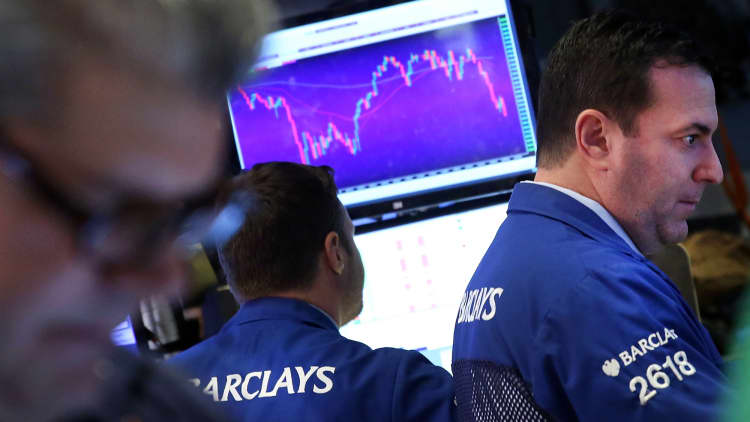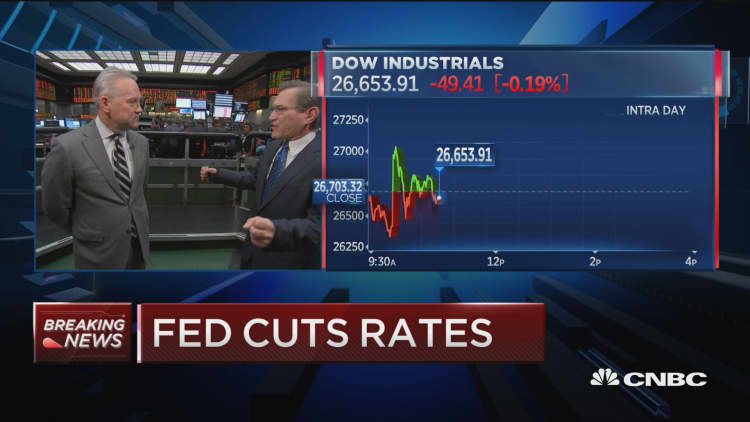
The 10-year Treasury yield broke below 1% for the first time ever in the wake of an emergency rate cut by the Federal Reserve to combat the economic effects of the spreading coronavirus.
The yield on the benchmark 10-year Treasury note fell more than 11 basis points to an all-time low of 0.906%. The yield on the 30-year Treasury bond was also at a record low of 1.601%.
To offset the potential economic fallout from the coronavirus, the Fed slashed interest rates by half a percentage point on Tuesday in between its policy meetings, the first such emergency cut since the financial crisis.
While the move by the central bank was widely expected at some point, Tuesday's reduction at 10 a.m. still caught traders by surprise, sending them into bonds. The Fed was scheduled to next decide on rates on March 18.
"The coronavirus poses evolving risks to economic activity," the Fed said in a statement. "In light of these risks and in support of achieving its maximum employment and price stability goals, the Federal Open Market Committee decided today to lower the target range for the federal funds rate."
Fed Chair Jerome Powell said at a news conference later that the committee saw "a risk to the economy and chose to act."
Stocks sold off again following the rate cut, after rebounding sharply on Monday with the Dow closing 5.1% higher to post its biggest daily percentage gain since 2009.
"Financial conditions only ease if market participants are confident enough to take risk but because of the huge economic unknowns right now still, investors will remain risk averse thus diluting the impact of this move," said Peter Boockvar, chief investment officer at Bleakley Advisory Group.
"As for encouraging higher consumer and business confidence, this type of panicky move, when the Fed has only 4 more rates to cut, I believe does the exact opposite," Boockvar added.
Tumbling yields
Investors have fled stocks and rushed into bonds for safety as the spreading virus stoked fears of a prolonged economic slowdown or even a recession. Global confirmed cases of the disease have surged to at least 91,300 as of Tuesday, while cases in the U.S. climbed to 91.
The benchmark 10-year rate has plunged 90 basis points this year alone, while the 30-year Treasury yield has also tumbled 75 basis points to historic levels.

"It would be premature to do anything in a significant way to ramp up risk," Guggenheim Partners Global CIO Scott Minerd said Tuesday on CNBC's "Halftime Report." "We need to find out where the bottom is here. ... Our target for the 10-year note is 25 basis points and long bond at 1%."
While the coronavirus poses a new threat to the global economy, the bond market has been flashing various warning signs about the economy for a while now. Last summer, the benchmark 10-year yield dipped below the 2-year rate, inverting a key part of the yield curve. The inversion has been a reliable recession indicator as the phenomenon has preceded every recession over the past 50 years.
Many investors have blamed global central banks' persistent monetary easing measures for the falling yields. Global policymakers have been slashing interest rates at the fastest pace since the financial crisis, according to Deutsche Bank. About $15 trillion of government bonds worldwide now trade at negative yields, the bank said.
— CNBC's Elliot Smith contributed reporting.


